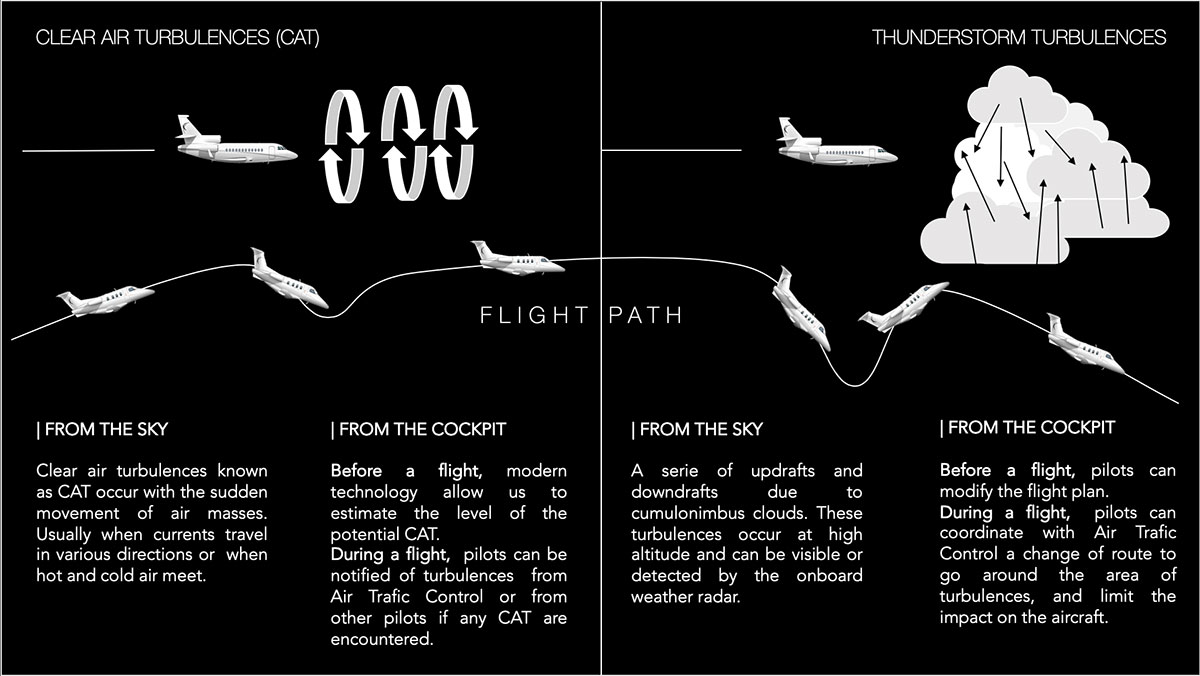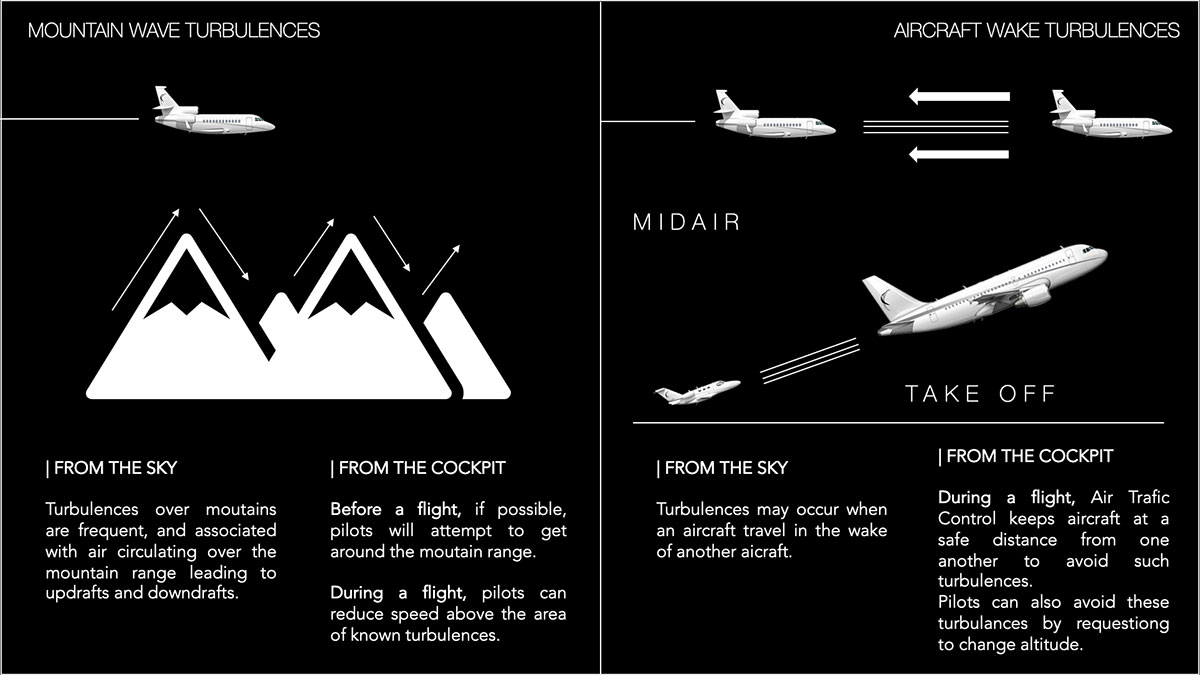Everything there is to know about turbulences
Atmospheric Turbulence can be defined by a disruption of the trajectory of an airplane during a flight causing passengers to experience bumps on board the aircraft. These turbulences are caused by a variation of the direction and intensity of the wind which can cause vertical or horizontal accelerations modifying the trajectory of an airplane.
Turbulences originate from:
- Mountains Range
- Thunderstorms/ Cumulonimbus
- Change in Air Masses/ Hot and Cold Air
- Wake of an aircraft
They can be classified in 4 categories according to their intensity:
- Light: Passengers on board will feel slight, non-permanent vibrations in very small quantities.
- Moderate: Slightly stronger and higher frequency turbulences, possibly affecting the trajectory of the aircraft.
- Severe: unpleasant for passengers, as they can feel bumps throughout the area, crew are then usually asked to remain seated.
- Extreme: Highest level of turbulences. Rarely ever experienced by pilots throughout their careers.
How are aircraft designed to withstand turbulences?
The aircraft’s structure and onboard technologies limit the impact of turbulence during a flight. The wings can absorb vibrations, while the radars can detect areas of possible turbulences to avoid.
How does pilot anticipate these areas?
Pilots are trained to study meteorology and particularly atmospheric turbulences. When filing the flight plan, pilots monitor the weather forecast to anticipate turbulences and go around them.
Are turbulences dangerous?
Turbulences are uncomfortable but not dangerous. It is a common occurring and no threat to passengers’ safety.
Contact our team to book your private jet:
Available 24/7 every day of the year, our team remain at your disposal for all your private jet requests. Contact us at +33 1 41 69 88 88, via our website or WhatsApp.















